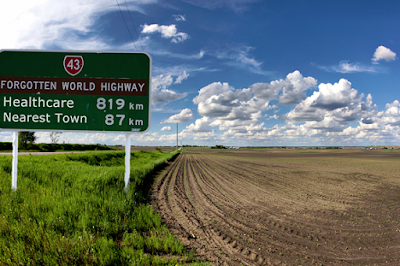Earlier this week, physicians in small private practices and rural areas breathed a collective sigh of relief. There is a possibility the implementation of changes to physician reimbursement (known as MACRA) could be delayed. Thank you, Mr. Slavitt, for listening. I am grateful to Orrin Hatch (R-UT) and Ron Wyden (D-OR) for keeping our rural needs in mind. We have a window of opportunity for rural health care to survive but we must communicate our needs as physicians and patients’ loud and clear.
Whether in reference to health care or public education, trying to increase quality while simultaneously decrease costs is an unrealistic proposition. Physicians in rural areas simply have fewer resources at their disposal. Adding insult to injury, Medicare payments to rural physicians are dramatically less than those of their urban counterparts for equivalent services, a point driven home by the fact 470 rural hospitals have closed in the past 25 years. Does it cost less to stitch up a laceration in a remote Alaskan village than in New York City? I doubt it. The expenses incurred obtaining supplies may be even greater for remote locations.
In order to set primary care physicians up for success, it is imperative those in charge understand our challenges. Rural physicians are alone, save for our spouses running our medical practices while we see patients. For physicians to be successful, additional revenue would be necessary to meet the expensive health IT burdens placed on us by this new payment model. Creating “virtual” groups to consolidate reporting will still require provision of a “virtual” assistant because it is more administrative burden than we can handle. Our profit margin is too narrow to accommodate additional employees.
I am not convinced time and money spent implementing new technology does anything to improve patient care; I am fairly certain, however, conversations with my patients provide considerable value. Can you not extract the information from claims, like private insurance companies already do? If we have to hire an additional employee, who is going to pay them? The solution is relatively simple; shift the burden of data collection from small practices to elsewhere or increase reimbursement so meeting your demands becomes feasible.
Preserve what we have in rural America until you have more clarity where we are heading in the future. According to a report on Rural Participation in the Medicare Shared Savings Program, rural providers already deliver value and quality within our existing infrastructure. Adjusted for lower volumes, Medicare spending per beneficiary is 3.5% less. Physician spending is 18.4% lower overall compared to our urban peers. We have strong personal relationships with our patients, operate at the top of our capabilities, and keep care local whenever possible. I fail to see the problem with our old-fashioned style of practice. In fact, maybe you should use us as models of efficiency or cost-containment for larger conglomerates.
Being in a small or rural practice is extremely challenging. In rural America, 75% of exchange consumers had incomes less than 250% of the federal poverty level. Every family in my practice who obtained insurance through exchanges met criteria for Medicaid, known in Washington State as Apple Health. 24% of rural children live in poverty. We are surrounded by Health Professional Shortage Areas (HPSA’s) and Mental Health Professional Shortage Areas because primary care physicians are spread entirely too thin. The elderly and poor in rural areas deserve access to quality health care. What happens to those people if small practices cannot keep their doors open as a result of overreaching government mandates?
According to the National Rural Health Association, 10% of physicians practice in underserved areas despite the fact 25% of the population lives there. One-third of automobile accidents occur in rural areas, however two-thirds of the deaths from these accidents occur on rural roads. Rural residents are more likely to die from injury due to delays in care. I have direct experience, recently providing road side care after an accident while awaiting EMS arrival for 15 minutes. Delays are related to increased travel distance and personnel limitations.
Extrapolate for a moment what could happen if numerous small practices closed in rural areas. Can you imagine if one third of strokes occurred in rural areas, but two-thirds of stroke deaths were rural due to significant delays in receiving timely treatment? It makes no sense to cripple our livelihood when we provide lifelines to underserved and disadvantaged populations.
Rural residents have fewer resources, significant geographic obstacles, and the acuity level of their medical problems is far greater. These detrimental conditions drive tremendous health disparity. We need to spend our time healing, comforting, and having conversations with patients, instead of reporting their medical problems and immunization status to non-physician statisticians.
For physicians in small or rural practices with scarce resources and deteriorating infrastructure, it will require significant investment for us to undergo meaningful transformation. Either learn more about the challenges small or rural practices face, provide waivers (like No Child Left Behind did) for exemptions, invest in our infrastructure, or leave solo physicians and our practices alone. Do not try to fix what I am not convinced is broken.
